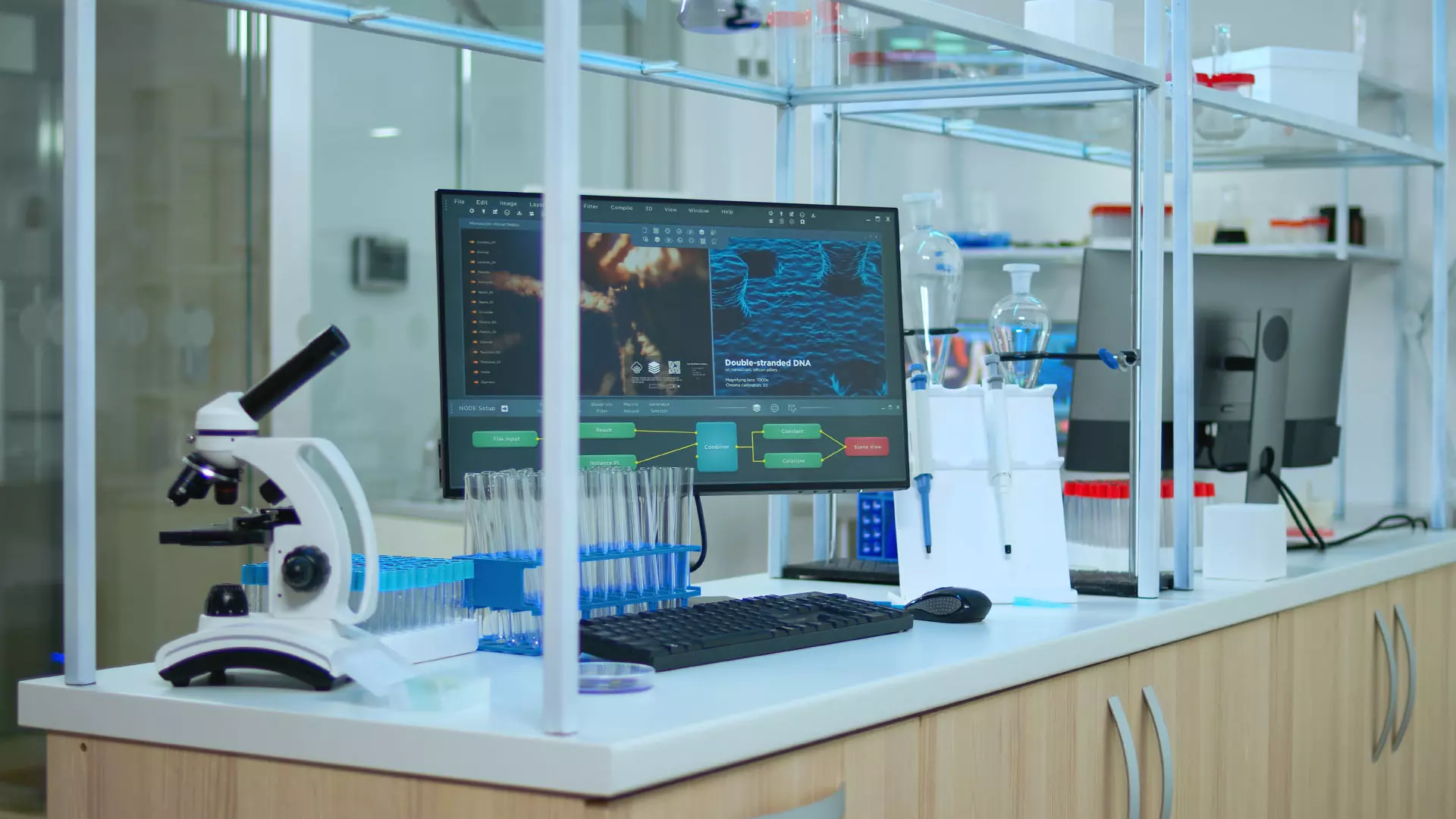 Credit: Freepik
Credit: FreepikAlistair Meadows, JLL: “Understand the science first and the real estate second”
Head of Life Sciences & Alternatives at JLL, Alistair Meadows reveals the current scenario of the “embryonic” life sciences sector
November 26, 2024Real Estate
Written by Helen Richards
The life sciences sector stands at a fascinating juncture, characterised by its rapid development and significant potential for growth. Emerging as a vital player in driving innovation, the sector’s dynamic field is shaped by increasing partnerships between developers, investors, and research institutions, coupled with government initiatives aimed at fostering economic growth through science and technology.
With the UK’s Golden Triangle leading the charge, and European cities such as Paris and Berlin gaining traction, the sector offers an intriguing blend of challenges and opportunities in a macroeconomic environment that demands adaptability and foresight.
Alistair Meadows, Head of Life Sciences & Alternatives, Capital Markets EMEA at JLL, brings over 25 years of international real estate expertise, spanning Europe, the UK, and Asia Pacific. In this exclusive interview with GRI Club, ahead of his participation at the upcoming GRI Credit Opportunities & RE Debt 2024, Alistair offers a glimpse into the current state of the “embryonic” life sciences sector.
How is life sciences unique when compared to other real estate sectors?
“The life sciences real estate sector is not unique per se, but it does require specialist knowledge and expertise to develop, build, own, and operate successfully.
Tenants, on the other hand, have specific requirements, largely in relation to the type and technical specifications of laboratory space they need to operate. Landlords have to adapt to these needs by firstly truly understanding the science, technology, and innovation-led business that the tenant is undertaking, and how this translates into their specific real estate requirements.
Within the UK’s Golden Triangle, with a healthy imbalance between supply and demand, landlords who have delivered new, purpose-built, fitted lab space in the last 12-18 months have been in the driving seat, achieving record lab rents. However, with the supply response to this imbalance, and new supply coming forward, tenants will have more options over the coming years. As such, the landlord-tenant power balance is likely to shift.”
How would you describe the current state of the life sciences sector? What trends do you see emerging?
“The life sciences sector is embryonic relative to other commercial sectors in terms of its size and maturity. A central trend in the sector is the partnerships, ranging from joint ventures between developers and investors, and corporates, academic and research institutions across both the public and private sectors.
The US is around 5-10 years ahead of the UK in terms of maturity, however it is suffering from challenges in terms of the fall in venture capital funding for life science companies, and an oversupply in key markets like Boston and San Diego.
The UK will hold significant opportunities over the next five years through government policy supporting the science and innovation industry to drive economic growth. In Europe, cities such as Paris and Berlin are rapidly emerging as key clusters, attracting occupier and investor demand.
In JLL’s 2024 EMEA Life Sciences Industry and Real Estate Perspective, which analysed 41 markets, Paris and Berlin were upgraded to ‘Advanced’ alongside London, Oxford, and Cambridge, showing the emergence of new European clusters.”

How do you see the macroeconomic environment impacting life sciences investment?
“As with other sectors, the headwinds in the recent macroeconomic environment have made development challenging and we’ve witnessed consolidation in the investor / developer universe active in the life sciences market.
However, with long-term, structural tailwinds driving growth of life sciences industries, investors and developers with a committed life sciences strategy will benefit from this demand.”
What type of capital is the sector attracting?
“The sector attracts capital from a broad spectrum of sources, including sovereign wealth funds (SWFs), pension funds, private equity, and strategic capital, for example, The Crown Estate and Wellcome Trust.
Public capital is often involved in funding the life sciences sector development through joint venture partnerships where public capital is married with private sector equity and expertise to bring forward development.”
For those interested in entering the life sciences real estate market, what advice would you give to navigate its unique dynamics and capitalise on its growth?
“Understand the science first and the real estate second!”
Join the conversation with Alistair Meadows as he moderates the ‘In Conversation with Capital: Life Sciences’ roundtable discussion at GRI Credit Opportunities & RE Debt 2024, joined by the most prominent lenders and funds in the real estate debt industry.
The life sciences sector stands at a fascinating juncture, characterised by its rapid development and significant potential for growth. Emerging as a vital player in driving innovation, the sector’s dynamic field is shaped by increasing partnerships between developers, investors, and research institutions, coupled with government initiatives aimed at fostering economic growth through science and technology.
With the UK’s Golden Triangle leading the charge, and European cities such as Paris and Berlin gaining traction, the sector offers an intriguing blend of challenges and opportunities in a macroeconomic environment that demands adaptability and foresight.
Alistair Meadows, Head of Life Sciences & Alternatives, Capital Markets EMEA at JLL, brings over 25 years of international real estate expertise, spanning Europe, the UK, and Asia Pacific. In this exclusive interview with GRI Club, ahead of his participation at the upcoming GRI Credit Opportunities & RE Debt 2024, Alistair offers a glimpse into the current state of the “embryonic” life sciences sector.
How is life sciences unique when compared to other real estate sectors?
“The life sciences real estate sector is not unique per se, but it does require specialist knowledge and expertise to develop, build, own, and operate successfully.
Tenants, on the other hand, have specific requirements, largely in relation to the type and technical specifications of laboratory space they need to operate. Landlords have to adapt to these needs by firstly truly understanding the science, technology, and innovation-led business that the tenant is undertaking, and how this translates into their specific real estate requirements.
Within the UK’s Golden Triangle, with a healthy imbalance between supply and demand, landlords who have delivered new, purpose-built, fitted lab space in the last 12-18 months have been in the driving seat, achieving record lab rents. However, with the supply response to this imbalance, and new supply coming forward, tenants will have more options over the coming years. As such, the landlord-tenant power balance is likely to shift.”
How would you describe the current state of the life sciences sector? What trends do you see emerging?
“The life sciences sector is embryonic relative to other commercial sectors in terms of its size and maturity. A central trend in the sector is the partnerships, ranging from joint ventures between developers and investors, and corporates, academic and research institutions across both the public and private sectors.
The US is around 5-10 years ahead of the UK in terms of maturity, however it is suffering from challenges in terms of the fall in venture capital funding for life science companies, and an oversupply in key markets like Boston and San Diego.
The UK will hold significant opportunities over the next five years through government policy supporting the science and innovation industry to drive economic growth. In Europe, cities such as Paris and Berlin are rapidly emerging as key clusters, attracting occupier and investor demand.
In JLL’s 2024 EMEA Life Sciences Industry and Real Estate Perspective, which analysed 41 markets, Paris and Berlin were upgraded to ‘Advanced’ alongside London, Oxford, and Cambridge, showing the emergence of new European clusters.”

“Tenants [...] have specific requirements, largely in relation to the type and technical specifications of laboratory space they need to operate.” (Credit: DC Studio | Adobe Stock)
How do you see the macroeconomic environment impacting life sciences investment?
“As with other sectors, the headwinds in the recent macroeconomic environment have made development challenging and we’ve witnessed consolidation in the investor / developer universe active in the life sciences market.
However, with long-term, structural tailwinds driving growth of life sciences industries, investors and developers with a committed life sciences strategy will benefit from this demand.”
What type of capital is the sector attracting?
“The sector attracts capital from a broad spectrum of sources, including sovereign wealth funds (SWFs), pension funds, private equity, and strategic capital, for example, The Crown Estate and Wellcome Trust.
Public capital is often involved in funding the life sciences sector development through joint venture partnerships where public capital is married with private sector equity and expertise to bring forward development.”
For those interested in entering the life sciences real estate market, what advice would you give to navigate its unique dynamics and capitalise on its growth?
“Understand the science first and the real estate second!”
Join the conversation with Alistair Meadows as he moderates the ‘In Conversation with Capital: Life Sciences’ roundtable discussion at GRI Credit Opportunities & RE Debt 2024, joined by the most prominent lenders and funds in the real estate debt industry.